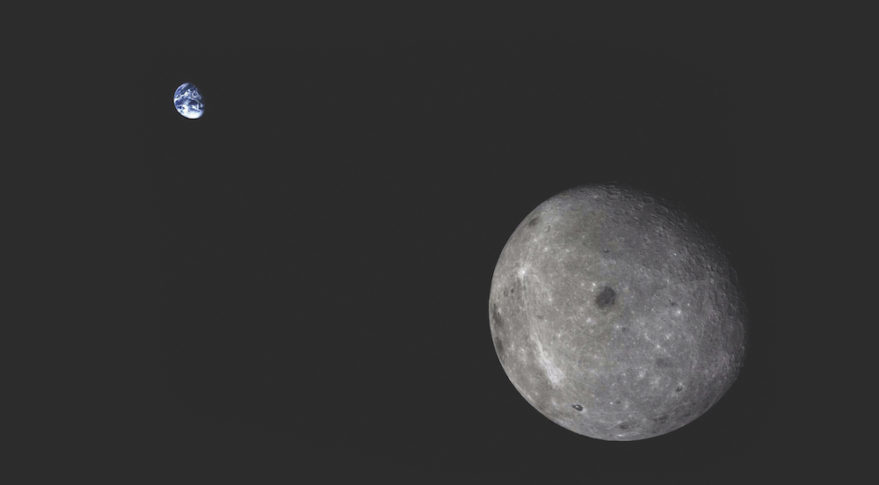25.12.2022

China’s robotic circumlunar test flight in 2014 snapped this image of the moon with Earth in the distance. Credit: Chinese Academy of Sciences
HELSINKI — China’s main space contractor is working towards making the country a leading space power with a focus on developing capabilities, space infrastructure and self-reliance.
Wu Yansheng, chairman of China Aerospace Science and Technology Corporation (CASC), the country’s main space contractor outlined a series of goals in a lecture broadcast by China Central Television Dec. 20.
Among the ambitions are known plans for a crewed lunar landing along with other exploration and transportation goals, while stressing the importance of space infrastructure and developing capabilities such as on-orbit servicing, building a space governance system.
The plans are presented as following a strategic plan of Communist Party of China General Secretary Xi Jinping to build a strong space nation. The plan is developing within a broader, Xi-driven push for technological and economic self-reliance amid the U.S. taking steps to “decouple” from economic engagement with China.
The overarching ambition is to make China one of the world’s main aerospace powers by 2030 and become a fully comprehensive space power by 2045. CASC, ranked 322 in this year’s Fortune 500 list, has previously stated plans to make China a global leader in space technology by 2045, a focus seen by some as a challenge to the U.S.
Major themes focus on space transportation, space exploration, governance, and national civil space infrastructure; the latter likely combining Earth observation, telecommunications and navigation and positioning constellations and services and providing global coverage.
Space transportation emphasizes developing smart and reusable launch vehicles to provide economical, fast and reliable access to space.
CASC aims to comprehensively improve China’s ability to use space, by continuing to “upgrade and improve our space infrastructure, build an in-orbit service and maintenance system, actively promote the construction of a next-generation space infrastructure system,” according to machine translation, and achieve efficient, low-cost transportation by 2030.
The giant space and defense contractor is already working on reusable rockets, including the Long March 8R, Long March 9 and suborbital and orbital spacecraft.
The presentation also notes the need for construction of a system of space law and space environment governance, and the development of capabilities for space domain awareness and space debris removal.
Wu stated that challenges exist, notably including conditions created by the U.S. “restarting great power competition,” the so-called “Wolf clause,” being kept out of the International Space Station project and Chinese aerospace firms being added to U.S. export blacklists. The U.S. is also seen by Wu as seeking to seize strategic resources including specific orbits, locations and radio frequencies.
The presentation highlights both long-term goals with apparent strong political backing, but also that China is focused on reaching targets and developing capabilities independently, rather than relying on international cooperation to a great degree.
In terms of nearer-term goals, Wu Yansheng stated plans for a crewed lunar landing by 2030, establishing the International Lunar Research Station (ILRS) in the 2030s, following three Chang’e robotic landing missions during this decade. China is however seeking partnerships for the IRLS, which will be developed alongside and separate to the U.S. Artemis program.
China also plans a Mars sample return mission in the “next 10 to 15 years,” suggesting a possible delay to earlier stated plans to deliver material from the Red Planet to Earth in 2031.
Missions targeting the head and tail of the heliopause and, separately, Jupiter and Uranus are also noted. A CASC-led program for studying exoplanets named “Miyin Project” is also mentioned.
CASC this year completed China’s Tiangong space station, manufacturing and then launching the three modules into low Earth orbit. China also has plans to expand Tiangong, starting with a second core module and docking hub.
CASC has previously released grand plans for space, including a space transportation roadmap to 2045, and plans to development a $10 trillion Earth-moon economic zone.
Quelle: SN
